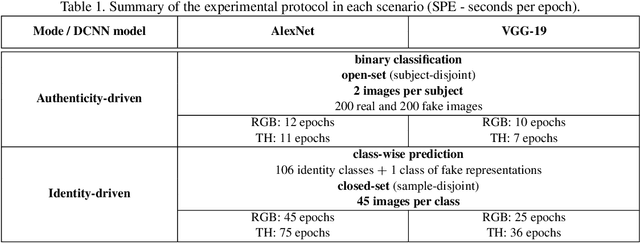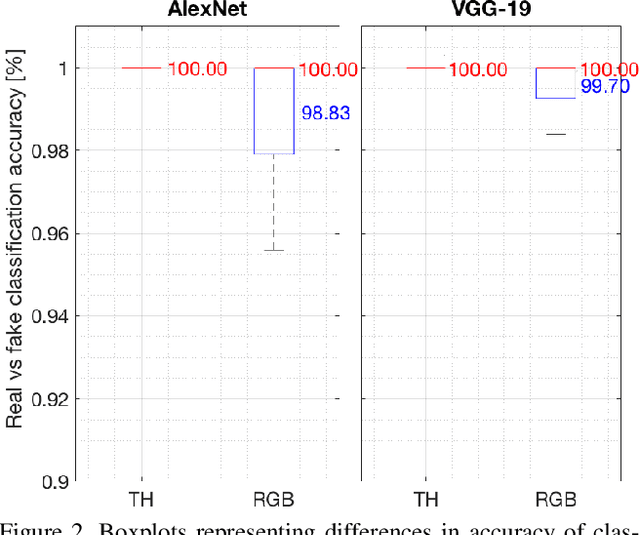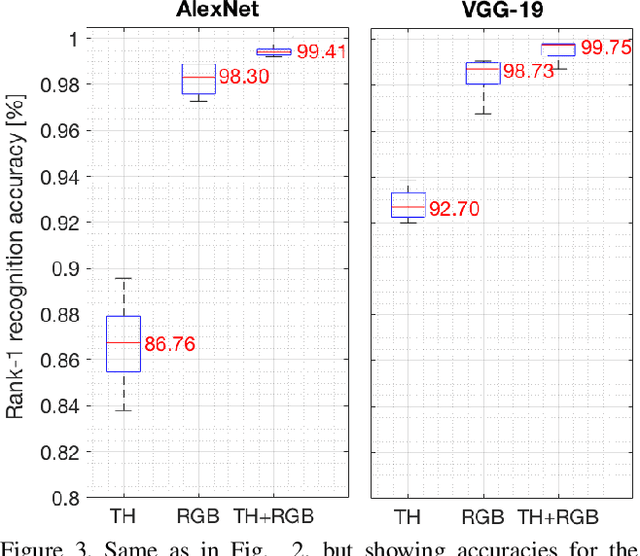Thermal Features for Presentation Attack Detection in Hand Biometrics
Paper and Code
Sep 12, 2018



This paper proposes a method for utilizing thermal features of the hand for the purpose of presentation attack detection (PAD) that can be employed in a hand biometrics system's pipeline. By envisaging two different operational modes of our system, and by employing a DCNN-based classifiers fine-tuned with a dataset of real and fake hand representations captured in both visible and ther- mal spectrum, we were able to bring two important deliverables. First, a PAD method operating in an open-set mode, capable of correctly discerning 100% of fake thermal samples, achieving Attack Presentation Classification Error Rate (APCER) and Bona-Fide Presentation Classification Error Rate (BPCER) equal to 0%, which can be easily implemented into any existing system as a separate component. Second, a hand biometrics system operating in a closed-set mode, that has PAD built right into the recognition pipeline, and operating simultaneously with the user-wise classification, achieving rank-1 recognition accuracy of up to 99.75%. We also show that thermal images of the human hand, in addition to liveness features they carry, can also improve classification accuracy of a biometric system, when coupled with visible light images. To follow the reproducibility guidelines and to stimulate further research in this area, we share the trained model weights, source codes, and a newly created dataset of fake hand representations with interested researchers.
 Add to Chrome
Add to Chrome Add to Firefox
Add to Firefox Add to Edge
Add to Edge